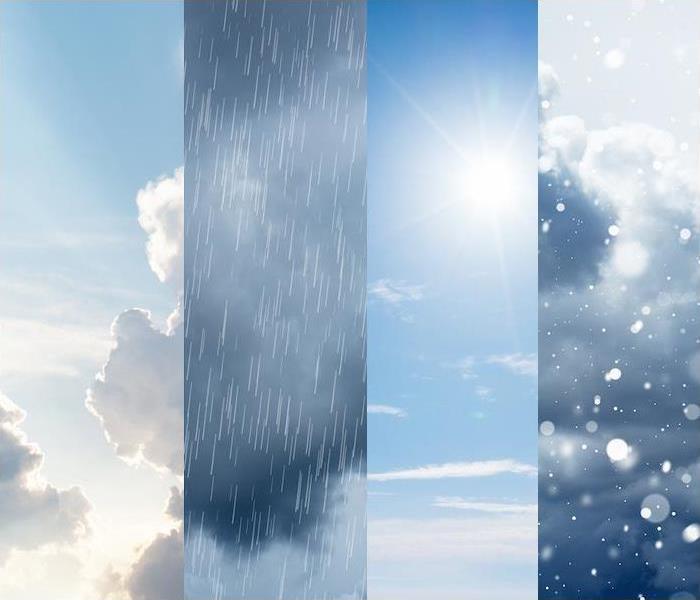Oregon’s Spring Weather Hazards | SERVPRO® of Clatsop, Columbia Counties
3/4/2022 (Permalink)
 SERVPRO of Clatsop, Columbia Counties is a click away if you experience any damage from severe weather.
SERVPRO of Clatsop, Columbia Counties is a click away if you experience any damage from severe weather.
In terms of total land area, the United States only comes up short behind Russia and Canada as the one of the world’s largest countries (though China is larger if all outlying US territories are excluded).
Seasonal weather in a country with such a large and diverse territory under one umbrella isn’t one-size-fits-all. Different parts of the country experience different weather patterns, and thus face varying degrees of weather threats throughout the year.
As spring approaches, warm and cold air masses collide throughout the nation, causing extreme weather events. Let’s take a look at what to expect in some of the country’s major regions, as well as what we need to keep in mind here in Oregon.
In the Pacific Northwest, we are prone to extreme rain in the spring (as you’re probably well aware of), which may result in flooding and water damage to homes. At higher elevations, snow will continue to fall, and the resulting melting and runoff will cause problems of its own. Wildfires are also of concern for the state and have become more severe in recent years.
Winters in the Upper Midwest and Northeast are the longest, with cold weather persisting throughout the season. From Maine to the Dakotas, extreme cold and the possibility of snowstorms and blizzards can be anticipated until late spring or early summer, when temperatures begin to climb back up.
With that said, the southern West Coast will have the opposite problem and will have to be on the lookout for excessive heat waves, which could endanger lives and properties. The South Pacific, including Hawaii, will be on the lookout for possible tsunamis caused by tectonic activity.
Windstorms, derechos and the threat of wildfires will be a major concern for the center of the nation, from Iowa to Texas. When the winds are high and the weather is dry, wildfires may quickly spread. Tornado Alley, which has a high frequency of tornadoes, is also in this area.
Extreme weather is a possibility in the Southeast as well, with tornadoes and severe thunderstorms in landlocked areas, as well as dangerous rip currents on the coastal areas and hurricanes even late into spring.
Extreme weather is a significant risk in the United States, no matter where you reside. Yours may not be the same as your friend’s a few states away, but understanding how to prepare is always a smart idea.
If extreme weather leaves you with damage from water, fire or other elements, help is a click away. Contact SERVPRO for fast, expert recovery.






 24/7 Emergency Service
24/7 Emergency Service